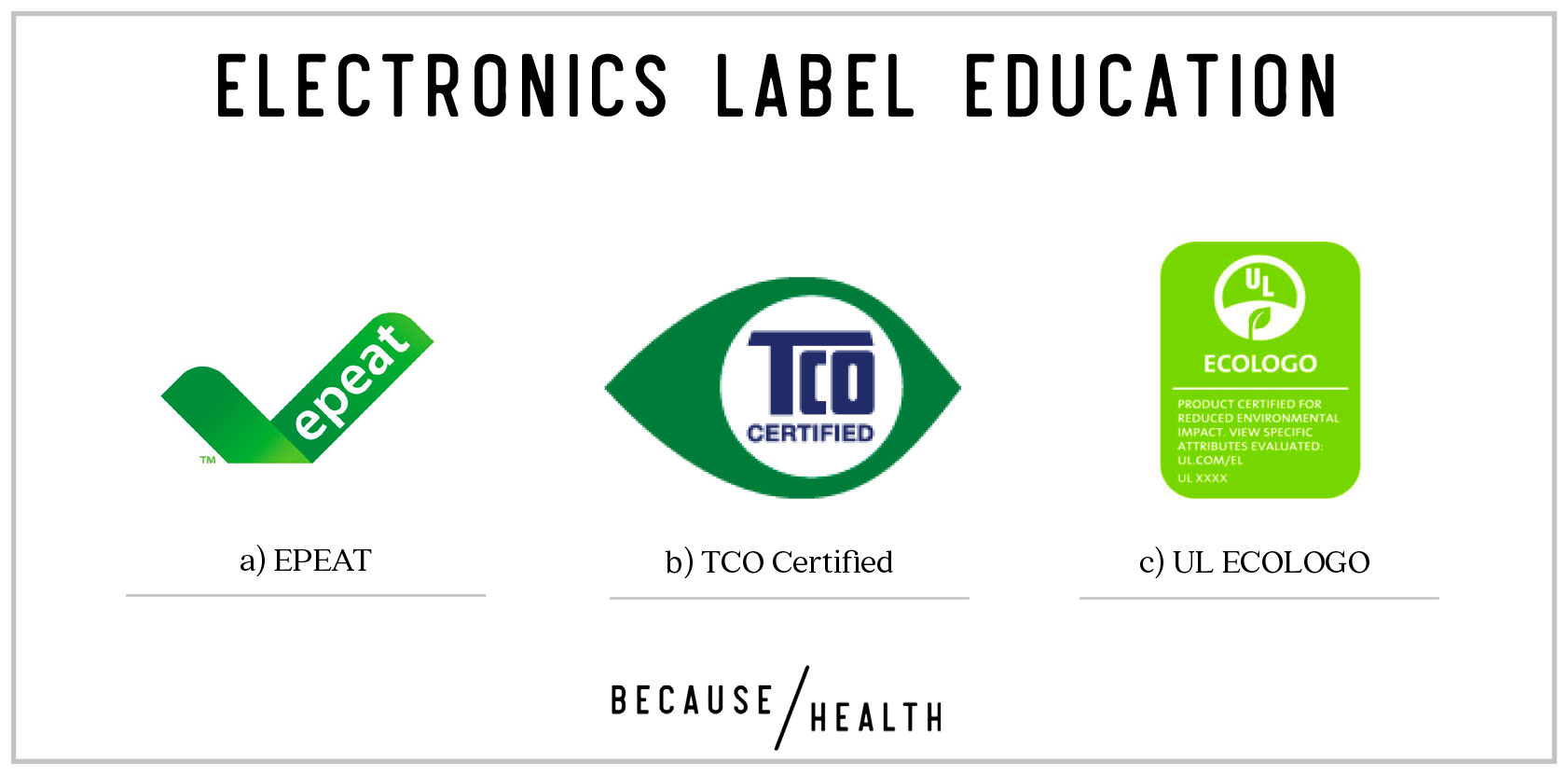Label Education: Electronics
Which certifications to look for when buying electronics
We all know that it’s smart to choose gadgets and electronics that use less energy, and EPA’s EnergyStar label makes that easy to do. But what about the other environmental impacts of your electronics, which can contain toxic chemicals like heavy metals, flame retardants, and plasticizers? Many of the chemicals are enclosed and won’t harm you, but some chemicals can escape out. Dr. Todd Whitehead, an investigator at UC Berkeley’s Center for Integrative Research on Childhood Leukemia and the Environment (CIRCLE), says: “For a lot of people like me who work in an office all day, you’re getting exposed to chemicals from the computer hardware that you are working with, like keyboards and the mouse. They have flame-retardants on them. People have done experiments where they have looked at the frequency of hand washing and levels of flame-retardants in people’s blood. You can see that people who wash their hands more frequently have lower concentrations of those chemicals.”
But don’t worry! There are thousands of products available that contain safer chemicals that are better for your health and are also better for the environment. And, you can find them easily by looking for the labels below while shopping or by searching online databases, which we’ve linked to.
When you’re ready to ditch a gadget that no longer works and isn’t repairable, remember to recycle it so that the chemicals inside don’t end up polluting the environment. Many electronics manufacturers and retailers will take items back for free, and if that’s not an option for you, you can find a recycler near you on Basel Action Network’s e-Stewards website. These recyclers adhere to the highest global standard for environmental and social responsibility and are worth supporting. Good luck, and enjoy using products that you can feel good about because they are healthier for you and your family, workers, and the environment!

a) EPEAT (Electronic Product Environmental Assessment Tool)
What is it? Global rating system for greener electronics developed by the Green Electronics Council. Rated consumer products include PCs and laptops, displays, tablets, cell phones, printers, copiers, scanners, and TVs. Over 4000 products from over 60 manufacturers have been rated. You can read details on the criteria and find rated products on the site.
Environmental Health: For chemical components, products must comply with the European RoHS Directive (Restriction of Hazardous Substances in Electronics), which bans certain chemicals, and there are additional restrictions depending on the type of product. Environmental criteria address the full product lifecycle, from design and production to energy use and recycling. Three levels of ratings (Gold, Silver, Bronze) depending on the number of criteria met.
b) TCO Certified
What is it? Global certification system for IT products designed to drive social and environmental responsibility throughout the product life cycle. Certified products include laptops, desktops, displays, tablets, cell phones, projectors, and headsets. Over 2800 products from 20 brands are certified. Products showing superior performance in certain sustainability criteria can receive an additional “TCO Certified Edge” certification. You can read an overview of the criteria, dig deeper into the criteria, and find certified products.
Environmental Health: Chemical restrictions exceed that of the European RoHS Directive (Restriction of Hazardous Substances in Electronics) and are specific to product categories. Social criteria include worker protections, public conflict minerals policies, and health and safety for users, including ergonomic factors and reductions in noise emissions. Environmental criteria address the full product lifecycle and include manufacturing, recycled and recyclable materials, availability of replacement parts, and take-back from manufacturers at end-of-life.
c) UL ECOLOGO
What is it? Global, primarily North American, certification system using life cycle–based standards for reduced environmental impact. Certified electronic products include cell phones, PCs, laptops, monitors, tablets, printers and printer inks, and copiers. There is a joint ECOLOGO/EPEAT certification for cell phones. (UL also certifies a wide range of products for safety and performance, not including environmental criteria. These are marked with a black circle containing the letters UL. For ECOLOGO, be sure to look for the green labels to the left.) Read details on the standards for specific product types (account creation required). Search for certified products (go to “view all” in “product category” and select Electronics).
Environmental Health: For chemical components, products must comply with the European RoHS Directive (Restriction of Hazardous Substances in Electronics), which bans certain chemicals, and there may be additional restrictions depending on the type of product. Standards address criteria in some or all of the following: materials; energy; manufacturing and operations; health and environment; product performance and use; and product stewardship and innovation. Achievement levels (such as Platinum/Certified) vary by product type. Some standards include social criteria, such as for conflict minerals.
